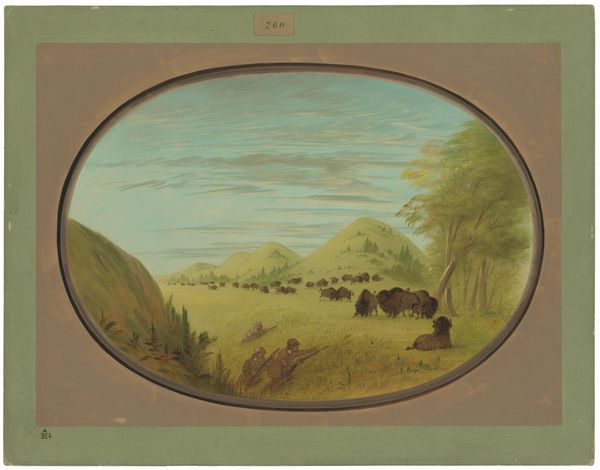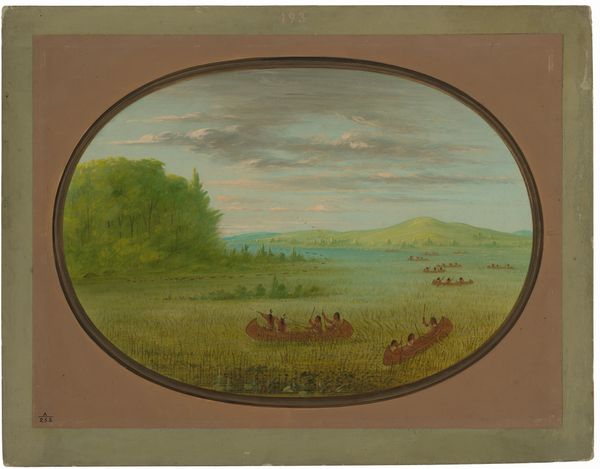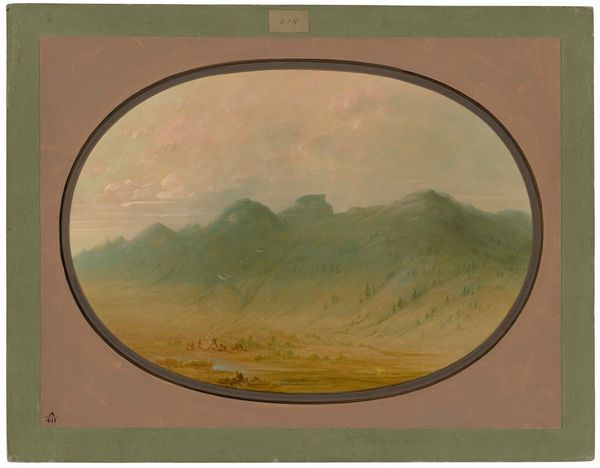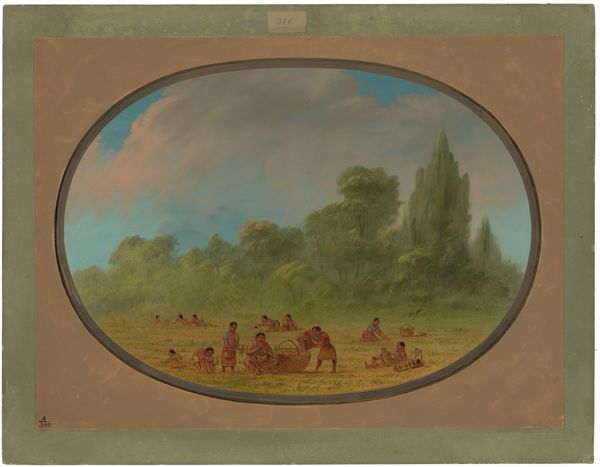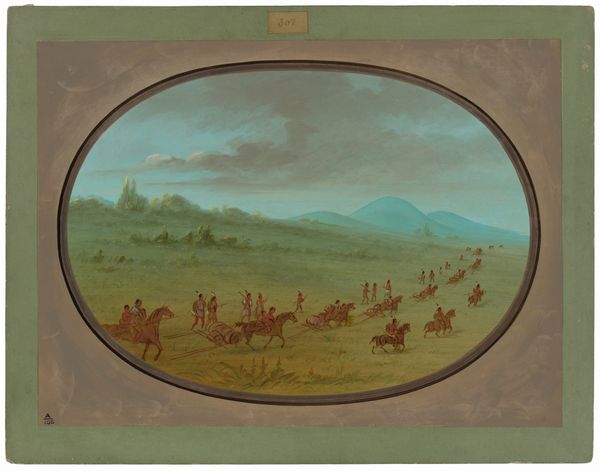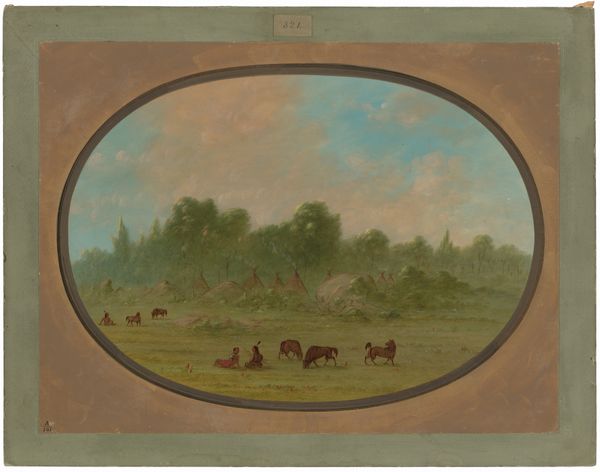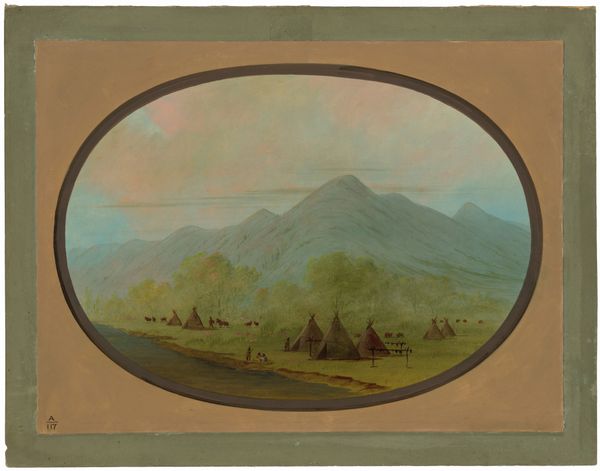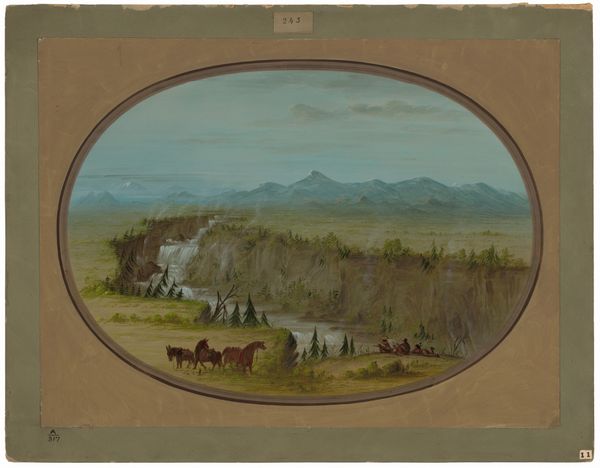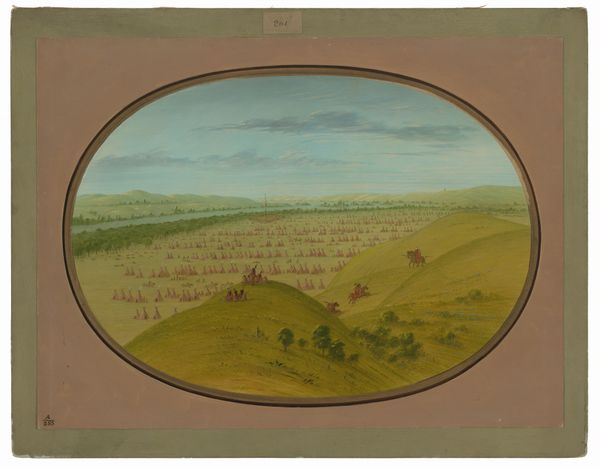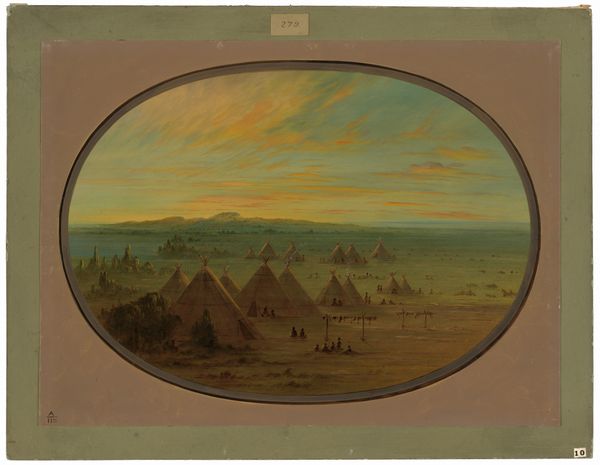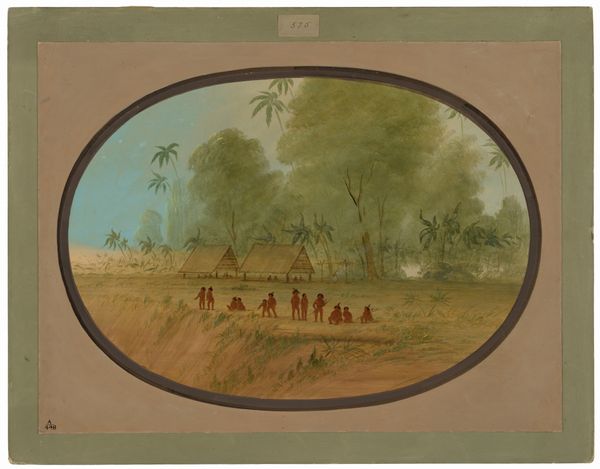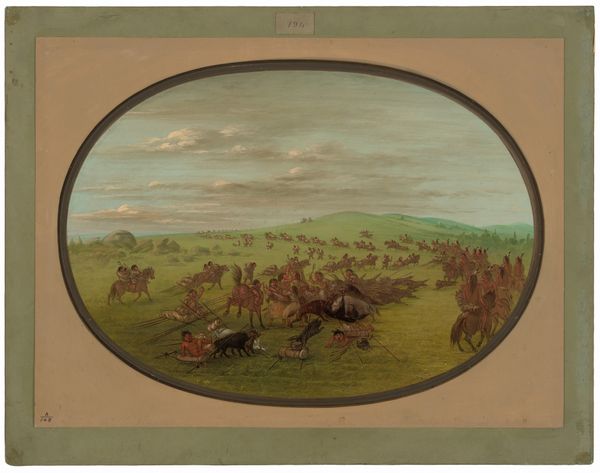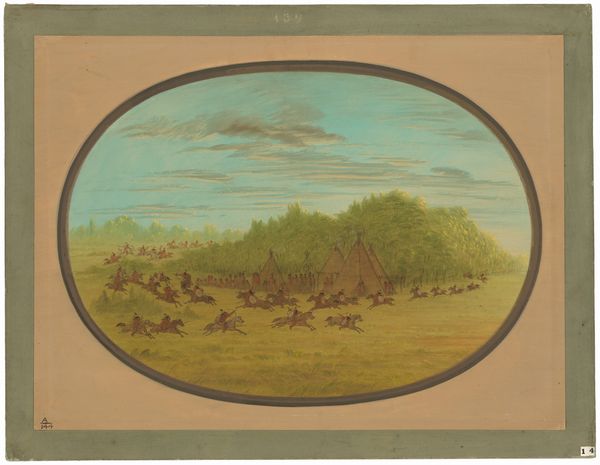
painting, gouache
#
water colours
#
painting
#
gouache
#
landscape
#
coloured pencil
#
watercolor
#
indigenous-americas
Dimensions: overall: 47.7 x 62.2 cm (18 3/4 x 24 1/2 in.)
Copyright: National Gallery of Art: CC0 1.0
Curator: Looking at this, I immediately feel this intense loneliness—almost like being the only person on Earth. Editor: I find it intriguing how Catlin, probably between 1861 and 1869, captured this Missouri River scene, the "Nishnabotana Bluffs," using what appear to be simple watercolors. The color pencil underdrawing peaks through in some areas, and is pretty raw in it's expression of materiality. The final picture sits on what seems to be layered supporting pages. Curator: Watercolors though, huh? That gives it this ghostly, translucent feel. And those bluffs...they're so gently rendered. Like silent guardians watching over that small gathering in the field. Makes you wonder what's going on with those tiny people. Are they discussing strategy? Just...existing? Editor: Those figures strike me too. Arranged around what looks like a simple cooking frame and possibly blankets and pipes on the floor, their activity in a wide open space is heavily emphasized through Catlin's decision to limit foreground markers, a conscious removal of things that are inherently a barrier between us and them. It highlights how vulnerable and easily influenced Native gatherings in those days would have been, constantly reliant on their immediate surrounds. The subtle colors remind me that many paints in the nineteenth century would be colored with heavy materials like cadmium and cobalt. Curator: Vulnerability, yeah, that's it. There's this vulnerability juxtaposed with the vastness of the landscape, making you really consider our relationship with nature, with each other. The rosy peach sky looks quite turbulent up against those simple teepee lines. Editor: The thing I find myself mulling over is the actual making of it, you know? What colors were accessible and affordable in the 1860's and who profited from this market for materials. You almost can't consider these paintings separately from their time and what role depictions such as these served when these territories were in question. How can Catlin see himself both recording their history while also indirectly influencing its trajectory. Curator: True. So much to unpack...so many questions that linger, like the mist in that valley. It just invites you in and challenges your own perspectives and understanding. Editor: Indeed, and analyzing not just the scene itself, but also the tools and social landscape of it's making adds more dimension to the entire endeavor. It is amazing it all is captured here so delicately.
Comments
No comments
Be the first to comment and join the conversation on the ultimate creative platform.
